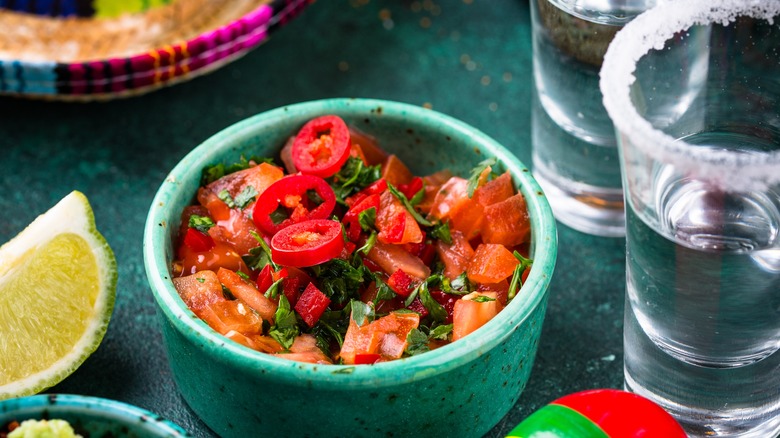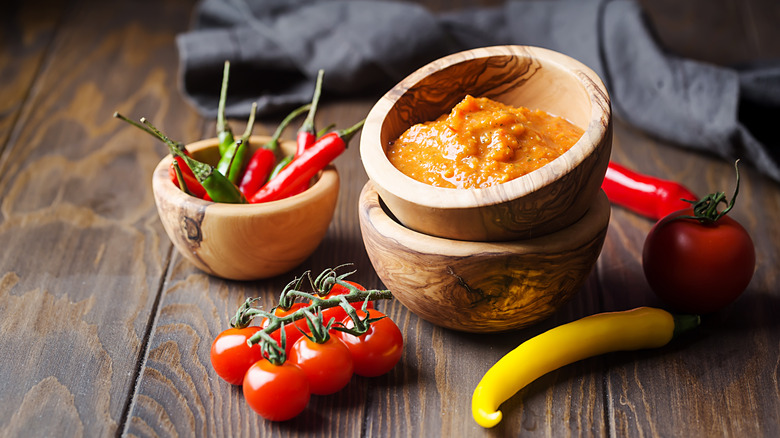The Boozy Ingredient That's Guaranteed To Amp Up Your Salsa
Integrating local flavors into a dish often means reaching for native spices, regionally grown produce, and meat procured from the proximity. However, it also applies to the local alcohol selection — just consider what a bottle of local burgundy brings to a boeuf bourguignon recipe or the beer's contribution in a bangers and mash with stout onion gravy.
In Mexico, some popular alcohols include beer, tequila, and pulque, the ancient Mexican agave drink. And you'll even find a selection of these inebriants used in a dish called salsa borracha. While using all three could be intimidating, there is a lot of potential in enhancing salsa with tequila.
The spirit brings a vegetal sharpness that perfectly aligns with the kind of kick expected from the condiment. Its agave flavors will meld with salsas of varying styles, and only a few teaspoons will go a long way. Although not an entirely traditional technique, some store-bought salsas have caught onto the trend. And for the simple integration, you could even throw in a teaspoon or two in a pre-purchased bowl and see what happens. Just get ready for a blast of flavor; such an ingredient addition brings a powerful bite.
High quality tequila perfectly melds into a bold salsa
This boozy salsa addition packs in quite a bit of flavor, so it's important to make the spirit selection wisely. For a pure agave flavor that won't throw off the flavor balance, make sure to reach for an additive-free tequila. Check the back of the bottle to pick out the best tequila. If you're keen to prepare an extra punchy salsa, settle on a blanco, but the reposado is a more all-around choice. The style still maintains its agave notes but also packs in a touch of sweetness through its barrel character.
Such a tequila will mingle especially well with the roasted vegetable notes, so consider making a sweeter salsa with roasted tomatillos. Meanwhile, a tequila inflected with salsa Verde will shine with the complex pepper notes of an ingredient like poblano, and the spice of a fresh jalapeño, but not anything much higher on the Scoville scale. Or, go with a different type of salsa and rely on a dried pepper like pasilla, throwing in some Roma tomatoes and orange juice alongside the tequila for zest. And if you're not feeling like tinkering, simply pour a tablespoon into a batch of pico de gallo. Regardless of the recipe, just remember to keep it to around an ounce of tequila per cup of salsa, or else the alcoholic notes will be too dominating.

